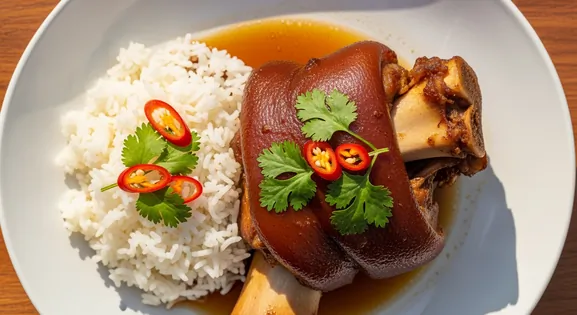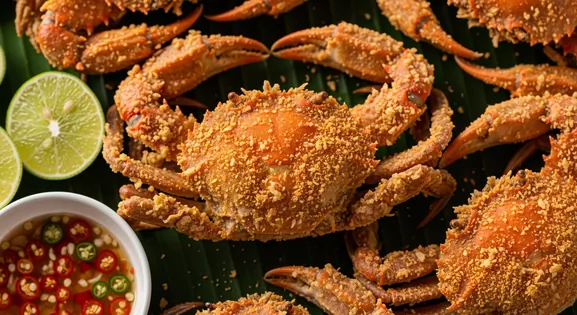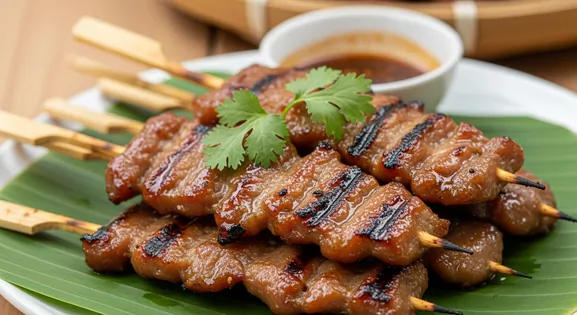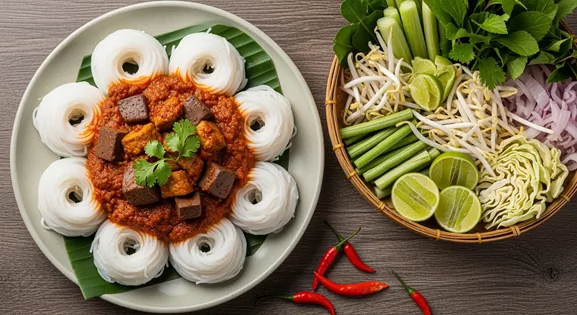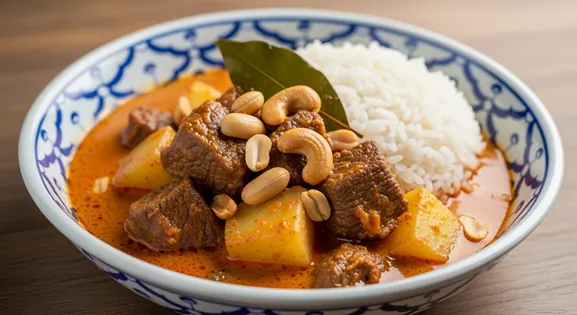Hokkien Noodles in Phuket
หมี่ฮกเกี้ยน (Mee Hokkien)
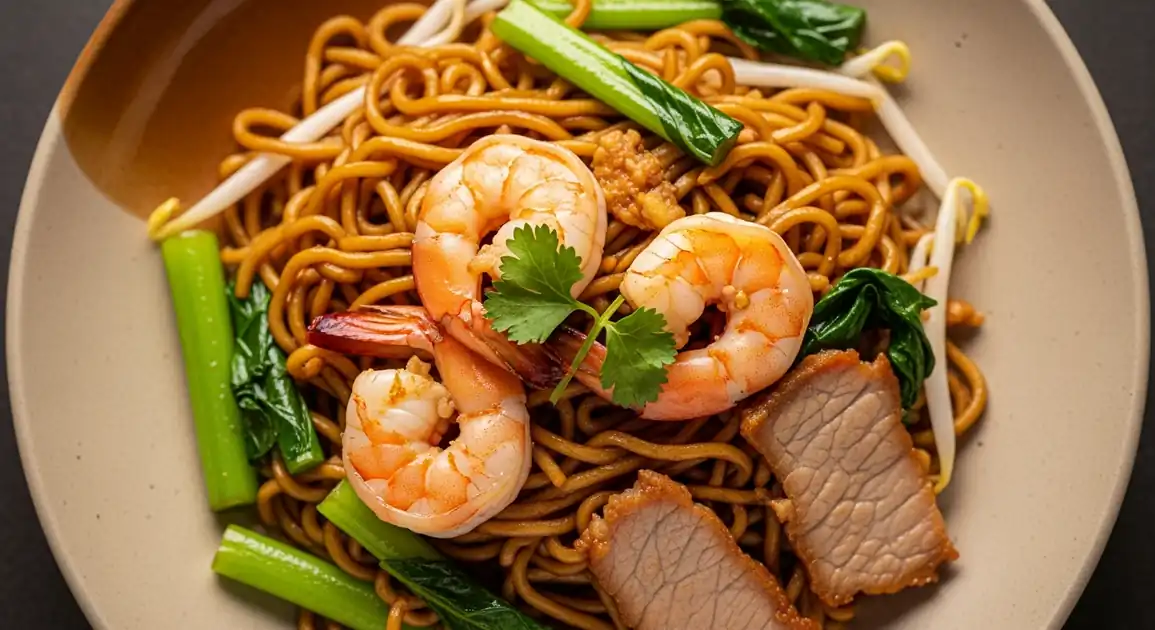
Discovering Authentic Hokkien Noodles
Step into Phuket's culinary heart and discover Hokkien noodles, a dish that tells the island's unique story. From the bustling Old Town shophouses to vibrant market stalls, each bowl offers a taste of Chinese-Thai heritage, rich with local seafood and smoky wok-fired flavors.
New to Hokkien Noodles? Learn all about its history in our complete guide.
Culture and Customs
Local Significance
In Phuket, Hokkien noodles are an important cultural marker of the island's unique Baba-Nyonya or Peranakan heritage – the blended culture of Chinese immigrants and local people. The dish connects modern Phuket residents to their Chinese ancestors who came as tin miners in the 19th century, while incorporating the island's abundance of fresh seafood.
Eating Customs
- In Phuket, often enjoyed with a sweet Chinese tea or local iced coffee.
- Local Phuket residents often add extra white pepper and lime juice.
- The dish is sometimes paired with Chinese-style stir-fried vegetables as a side.
How Locals Eat It: Variations
Phuket-style Seafood Hokkien
Heavy emphasis on local seafood, particularly prawns, squid, and fish cake, with slightly less sauce than other regions and often a squeeze of lime added for brightness.
Old Town Special Hokkien
Found in Phuket Old Town's traditional establishments, this version often includes locally influenced touches like an extra-crispy egg, traditional Hokkien spices, and sometimes thinly sliced local sausage.
Vegetarian Festival Hokkien
Available during Phuket's famous Vegetarian Festival, these strictly vegan versions use mushrooms, tofu, and meat substitutes with special 'jay' seasonings that avoid restricted ingredients.
Key Tips for Enjoying This Dish
A legendary spot in Phuket Old Town, Mee Ton Poe is a must-visit for its consistently excellent Hokkien noodles. Expect a queue, especially at lunch.
This open-air food court in Phuket Town offers several vendors specializing in Hokkien noodles, allowing you to sample different styles in one convenient location.
Many vendors offer a "special" (piset) version with extra toppings like crispy pork, fish balls, or a half-boiled egg, enhancing the local experience.
Navigating the City for Great Hokkien Noodles
Phuket Old Town
The historic center offers the most authentic Hokkien noodles from vendors with Chinese heritage, many using recipes passed down through generations.
Thalang Road, Soi Romanee, Dibuk Road, On On Hotel Area
Lunch, Dinner
Local Markets
Fresh markets with food courts serve excellent Hokkien noodles using ingredients from the market itself.
Banzaan Fresh Market, Downtown Market, Weekend Market
Morning, Lunch, Evening
Patong Area
Tourist-oriented versions available, though often at higher prices and sometimes adjusted for foreign palates.
Jungceylon Food Court, Banzaan Market, Malin Plaza Night Market
Lunch, Dinner, Late Night
Local Neighborhoods
Some of the best versions can be found in less touristy areas where locals eat.
Phuket Town outskirts, Kathu area, Chalong
Evening, Dinner
Vendor Tips
- In Phuket Old Town, look for signage in both Thai and Chinese characters for more authentic options.
- Many good vendors have photos of their preparation process or family history displayed.
- Vendors who also offer Hokkien-style noodle soup often excel at the stir-fried version too.
- Some of the best vendors are located on small side streets (sois) rather than main roads.
A Traveler's Checklist
What to Look For
-
Stalls in Phuket Town (esp. Old Town area) or local markets with intense wok flames ('wok hei').
High heat cooking is essential for both authentic flavor and ensuring ingredients, especially seafood common in Phuket style, are cooked quickly and thoroughly.
-
Noodles cooked fresh per order, often blanched quickly before stir-frying.
Avoids risks associated with pre-cooked noodles sitting out.
-
Fresh-looking seafood (prawns, squid) and crisp vegetables added during cooking.
Phuket Hokkien Mee often features seafood; freshness is crucial.
-
Clean wok station, utensils, and organized storage of ingredients like noodles, sauces, and seafood.
Good hygiene minimizes cross-contamination risks.
What to avoid
-
Stalls using pre-cooked noodles sitting in trays or bags at ambient temperature.
Increases risk of bacterial growth and results in poor texture.
-
Cooking over low heat or taking an unusually long time to stir-fry.
Indicates improper technique and potentially insufficient heat for food safety.
-
Dull, slimy, or off-smelling seafood ingredients.
Seafood must be fresh; any sign of spoilage is a major risk.
-
Excessively greasy or oily noodles.
While Hokkien Mee has some oil, excessive amounts might indicate old oil or poor technique, affecting taste.
Know Before You Go
Dietary Information
Important Note for Travelers: Your safety is our priority. Below are the common allergens associated with the traditional preparation of this dish. However, recipes and ingredients can vary significantly between establishments. Always confirm all ingredients directly with the food vendor before ordering, especially if you have a severe allergy.
Potential Allergens
Dietary Suitability
Price Guide
Budget Tips
- Local markets like Banzaan Fresh Market food court offer authentic versions at reasonable prices (50-70 THB).
- Old Town local vendors charge midrange prices (60-80 THB) for excellent quality.
- Tourist areas like Patong Beach have significantly higher prices (100-150 THB) for similar dishes.
- Seafood versions cost 15-30 THB more than standard but are worth it for the fresh local catch.
- Some night markets offer special deals during weekdays or early evening hours.
Serving & Seasonality
In Phuket, often served with a slice of lime, additional crispy garlic, and sometimes Chinese parsley. Local condiment trays typically include pickled chilies in vinegar, a Phuket specialty chili sauce, and ground white pepper.Best Times to Enjoy
- Lunch: Popular among locals and workers throughout Phuket.
- Dinner: Prime time for Hokkien noodles, especially in markets and Old Town.
- Late Afternoon: Available as a substantial snack or early dinner option.
Seasonal Availability
Available year-round, with some vendors highlighting seasonal seafood during different times of year.
How to Order with Confidence
When ordering Hokkien noodles in Phuket, specify if you prefer 'Mee Hokkien Nam' (with more gravy/broth, a common Phuket style) or 'Mee Hokkien Haeng' (dry stir-fried). Don't hesitate to ask for 'piset' for extra toppings like crispy pork or a half-boiled egg. Locals often customize their bowl with pickled chilies in vinegar, a dash of white pepper, and a squeeze of fresh lime for an extra zing. Enjoy it with a local iced tea.
Practical Guides for Enjoying Hokkien Noodles
Ordering Phuket-Style Hokkien Noodles (Mee Hokkien)
Get the best bowl of this Phuket specialty noodle dish.
- Find dedicated Hokkien Mee stalls or restaurants, often in Phuket Old Town or local areas like Sam Kong or Lock Tien food court.
- Specify 'Mee Hokkien Nam' (with broth - Phuket style often has more gravy/broth) or 'Mee Hokkien Haeng' (dry stir-fry).
- Often served with pork, seafood, fish balls, and greens. You can sometimes ask for 'piset' (special/extra toppings).
- Ask for a half-boiled egg ('kai luak') on top – a popular local addition.
- Use condiments like pickled chilies and chili flakes provided on the table to adjust taste.
Finding Authentic Hokkien Mee in Phuket Old Town
Navigate the historic streets to find the best Hokkien noodle vendors.
- Explore streets like Yaowarat Road, Dibuk Road, and Thalang Road in the Old Town area.
- Look for unassuming, often generations-old shophouses or stalls specializing in Hokkien Mee.
- Check out well-known spots like Mee Ton Poe (several branches) or Lock Tien center for reliable options.
- Observe the wok station – look for intense flames and quick stir-frying action.
- Go during peak lunch hours (11 AM - 1 PM) when turnover is high and noodles are freshest.
Our Commitment to Quality
At Tasteplorers, our mission is to provide the most accurate and useful travel information in the world. To achieve this, all content on this site is created through our unique editorial framework. We utilize leading AI research tools, guided by our proprietary prompts, and a multi-stage validation process. This entire system is overseen by our editorial team to ensure everything we publish meets our high standards for accuracy, cultural nuance, and practical value for travelers.
Learn more about our Editorial Process and our Mission.
Countries
Explore regions
Europe
Discover Europe's diverse culinary landscape, from Mediterranean flavors to hearty Alpine fare. Learn to navigate markets, decode menus, and eat like a local.
Latin America & Caribbean
Discover the vibrant cuisines of Latin America & the Caribbean. Our expert guide covers everything from Mexican street food to Peruvian ceviche and market tips.
Oceania
Explore Oceania's diverse food scene. Learn about Polynesian earth ovens, Fijian feasts, and the vibrant café culture of Australia and New Zealand.
Southeast Asia
Explore Southeast Asia's diverse food cultures from Thailand to Vietnam. Get expert tips on navigating spice levels, choosing quality vendors, and understanding the rich traditions of the region.
